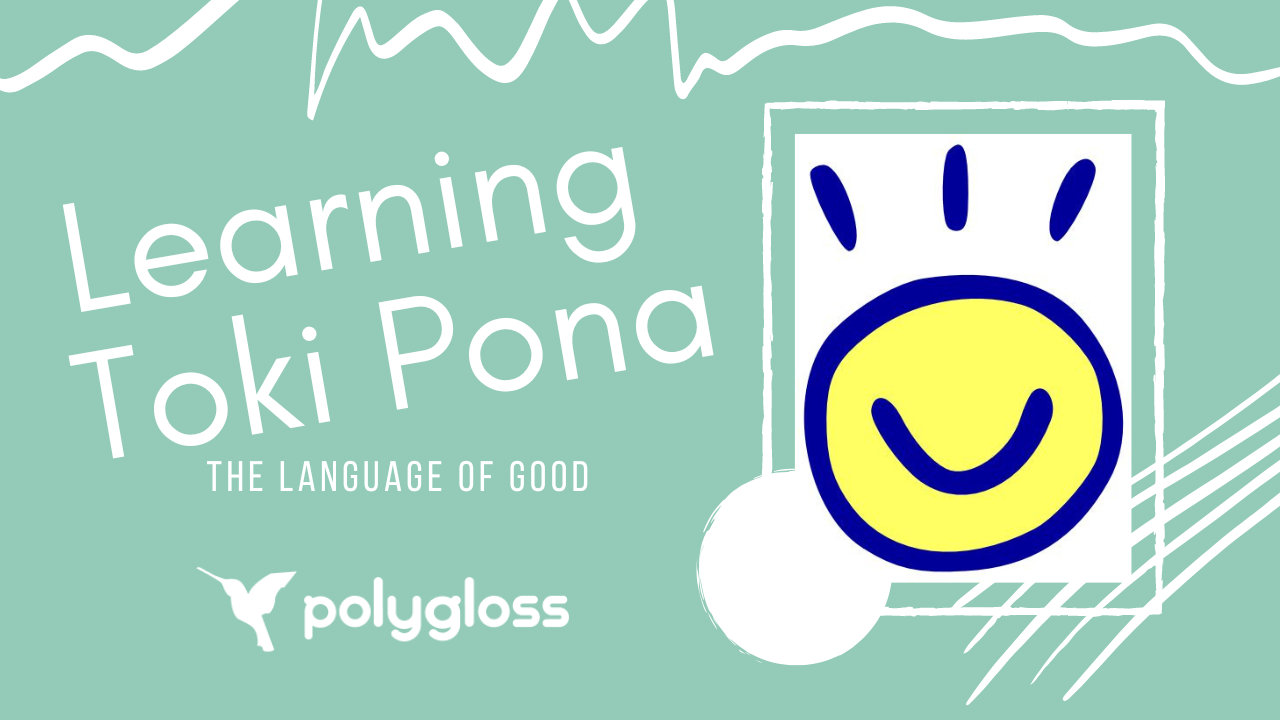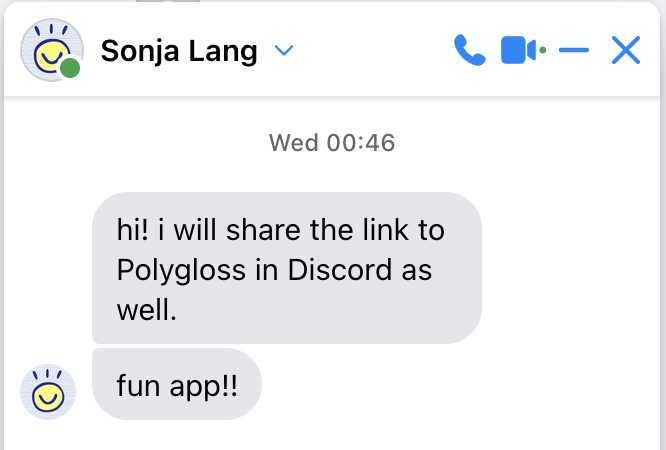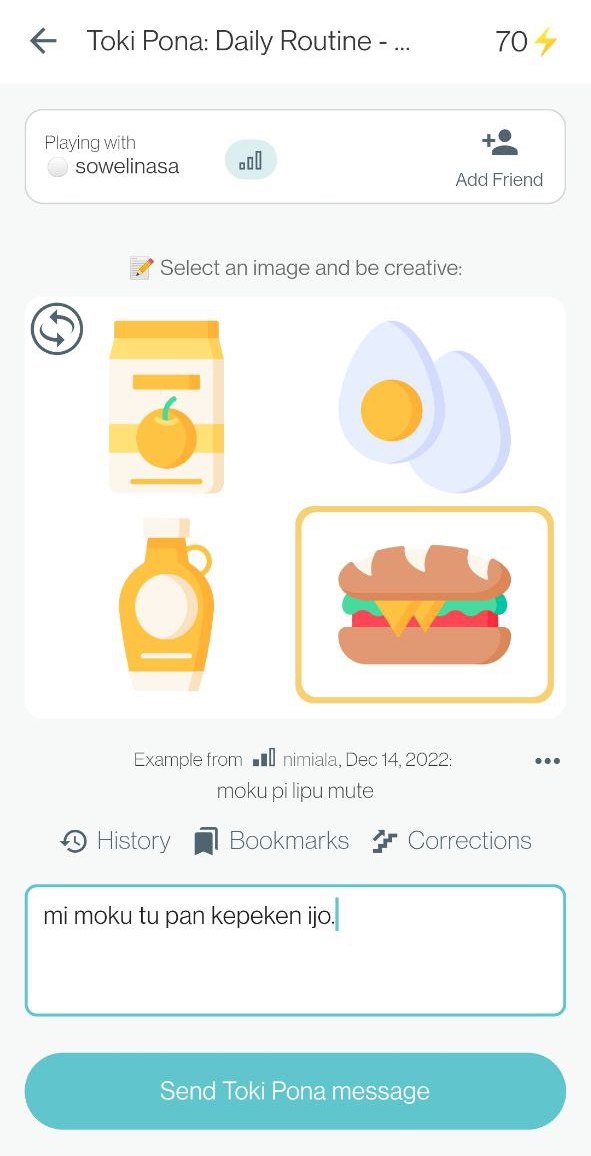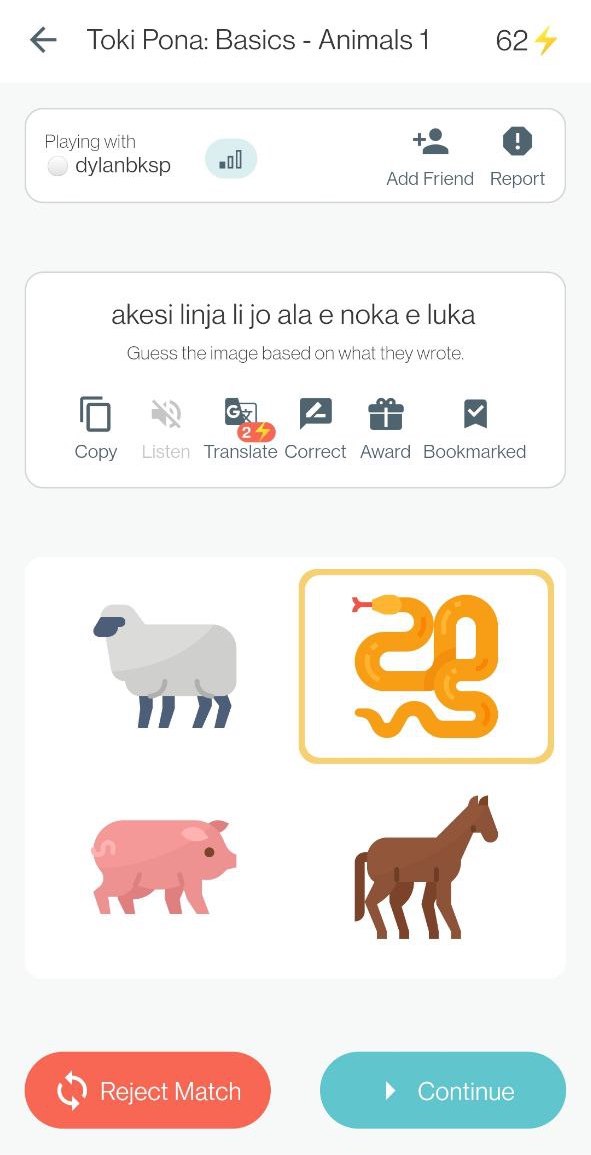Have you ever heard of a language called Toki Pona? The first time I encountered it was when I saw it in someone’s profile while playing Polygloss. I had never heard of it before and, being very curious, I started searching about it and was immediately intrigued.

Toki Pona is a conlang, which means a constructed, invented or fictional, language. The most famous example of a language in this category is Esperanto, which is the most widely spoken conlang and was created with the purpose to be a lingua franca and used in international communication. Interlingua was also created for that purpose, but that is not always the case for conlangs. Some were created as part of an art or literary work, such as Tolkien’s elvish, Klingon or High Valyrian. And some were created as some sort of linguistic or psychology experiment, such as Láadan. This is also the case for Toki Pona.
The Language of Good
Toki Pona was created in 2001, inspired by Taoist philosophy, when its creator was battling through depression. The words toki pona can be translated as “the language of good”. Its purpose is to help its speakers simplify their thoughts, focus on basic things, immediate surroundings, and induce positive thoughts. According to the wikipedia page of Toki Pona, this means the language and its purpose are in accordance with the Sapir–Whorf hypothesis, which says that a language influences the way a person thinks and behaves. This is a bit of a delicate topic, so I want to add a brief discussion on this, specifically.
You may have heard about the Sapir-Whorf hypothesis from the urban legend that Inuits have 100 words for snow. The problem with this statement is that what constitutes a “word” in agglutinative languages is completely different if we compare with other languages. Many other problems besides this one were found, and the strong form of this hypothesis, language determinism, has been categorically discredited by researchers. However, a weak form, language relativity, a modern modification of the hypothesis, is still being debated by researchers. While some still completely reject the weak form, other findings seem to show that language can influence some thought, but in a more limited way than previously thought. This is all very complex and I do have some personal thoughts on this, specially given the current age of social media manipulation by the extreme-right. But going beyond the scope of language, and having struggled with depression myself, I’m deeply aware how my thoughts are easily influenced. For example, because of that, I have made the music I hear very intentional, specifically avoiding things Linkin Park, Radiohead and Sufjan Stevens. So I find the whole idea behind Toki Pona extremely interesting.
While the language was not designed for general communication, it has gathered a sizeable community since its creation, having thousands of speakers today.
How to learn Toki Pona
The creator of Toki Pona, Sonja Lang, describes it as her attempt at understand the meaning of life in 120 words. Even though nowadays it has 137 essential words, it’s still a very simple and minimalistic language. There are no cases, words are not inflected (so you can’t tell the time a verb happens), very few prepositions, and the alphabet contains only 14 letters: a e i j k l m n o p s t u w.
Here are some examples of text, taken from the rules of their Discord Server:
This is a server for sharing, enjoying, and using Toki Pona.
tan pi kulupu ni li toki pona.
The following guidelines help maintain a safe space in order to be able to use and learn Toki Pona.
lipu lawa ni li ken e awen pona pi ma pona.
I’ve been finding it really fun so far! To learn the language, I started with this cheat sheet of the grammar and dictionary in PDF here. Other websites have a more detailed Toki Pona course and the official Toki Pona website has more resources too. And, of course, you can also use Polygloss to learn and practice it:

Besides offering fun opportunities to use the language, you can unlock sentence examples to learn from others, receive corrections and feedback from other players, and save sentences for consulting later:


Polygloss has an active Toki Pona community, and the language is now the 6th top language of the app. And because Polygloss is fully image-based, it can be used not just for Toki Pona, but any other language, including minority languages, dialects, and other conlangs. As long as there is another player to play with, you can start a match and start practicing, so don’t forget to invite your friends to play with you!
Update: how usable is the language?
One of my curiosities about Toki Pona, is how can it have so many speakers given how simple it is? Is it really possible to communicate with it? After posting this blog post on reddit, people shared various experiences they had with the language. As it turns out, people actually get fluent in it, and use it to talk to their friends. One user even shared a video of an introduction to non-Euclidean geometry in Toki Pona just to prove that it was possible:
This is honestly so awesome that I’m considering studying some more Toki Pona to get at least good enough to understand this video! You should also definitely check it out if you’re curious about how Toki Pona sounds.
How about you? Do you speak Toki Pona? How do you feel about using it?
Update 2: Lots of things are pona
I think the reason I’m enjoying Toki Pona is the same of why I enjoy the Lua programming language. I can have the whole thing in my head. The disadvantage is probably that there are many ways of doing the same thing.
Having only a limited subset of words means you gotta combine them wisely. And in a way that’s efficient and understandable. Differently from programming, though, in a language you can have abstractions and polysemy on the fly. For example, “thanks” is one of the first words I learn in every language. In toki pona it wouldn’t be different. I was surprised that “thanks” didn’t have a direct translation in a language with positive thinking in its guiding principles. But given the short amount of words, this also makes sense. So how could I say it? After looking up the meaning of some toki pona words in the cheat sheet, I came up with:
I love that this exists.
mi olin e ni li lon. (I think)
But then I looked it up at the dictionary (this is an amazingly built website, by the way), and the answer is simply:
Good.
pona.
… of course! 😅 As others on reddit have pointed out: pona has many different meanings. My first thought was that this was going to get complicated. How do I know which of the ponas someone means? But looking at this from a different angle, this means lots of things are pona. Which is kinda beautiful.
